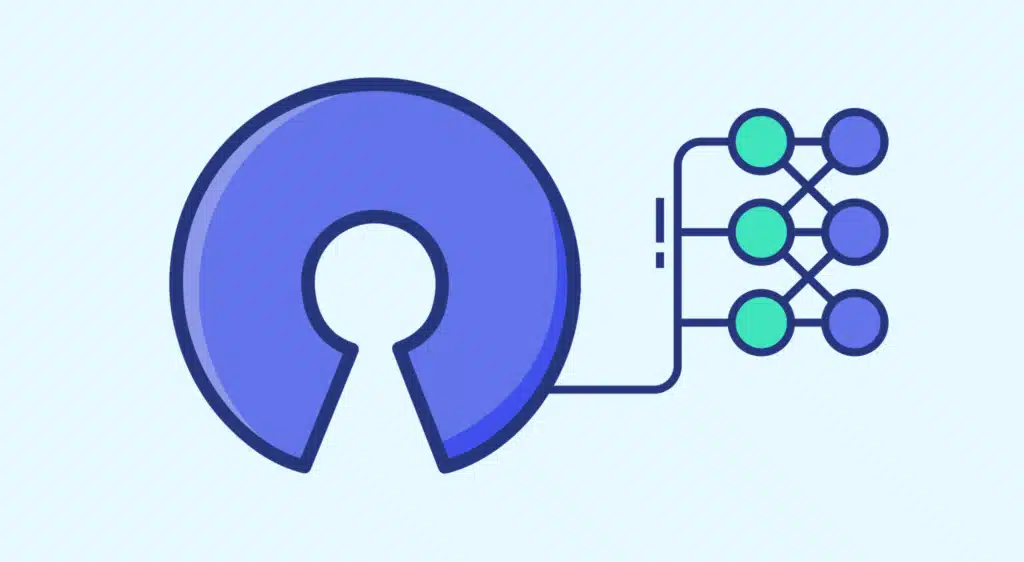Open source is originally a model for software development that propagates openness and collaboration through the free distribution of source code. Today, this concept has expanded to all areas and industries. Here you'll learn everything you need to know about open source and why this concept is crucial in computer science and data science.
The term “open source” originally referred to open source software (OSS). Open source software is software whose source code is publicly accessible. Anyone can view, modify and distribute it at will.
Open source software is released under a specific license, making its source code legally accessible to all. There are many different licenses.
This software is developed in a collaborative, decentralized way. Anyone can make a contribution, which is then reviewed by other members of a community.
Open software is often less expensive and more flexible. It also benefits from a longer lifespan, as the community will continue its development longer than a single developer or company.
There are many famous open source software projects. Examples include the Linux OS, the Python programming language, Ansible, the Mozilla web browser and the Kubernetes container orchestration system.
Over time, open source has become a veritable movement. It has extended beyond software production. The methods and model of decentralized production are used in many fields and industries.
Founded in 1988, the Open Source Initiative (OSI) formalized the term “open source” and established a precise definition. This has enabled the concept to become a true industry standard.
The history of Open Source
The history of open source began in the 1950s. It was then that researchers developed the first Internet technologies.
Telecommunications network protocols were based on an open, collaborative research environment. The Advanced Research Projects Agency Network (ARPANET), forerunner of the Internet, encouraged mutual aid and cooperation between researchers.
Groups shared source code and improved it. Forums enabled communication, and the development of standards that laid the foundations for open source. The history of this movement is closely linked to that of the Internet.
What is the open source development model?
An open source development model is a process used by a community to develop a software project. This software is then released under an open source license, allowing anyone to view or modify the source code.
Today, there are a number of platforms dedicated to hosting open source projects. These include Git repositories such as GitHub and GitLab. These code-hosting services enable anyone to propose modifications, which may or may not be added to the project.
Open source, closed source, free software: what are the differences?
In 1983, Richard Stallman launched the GNU Project, inaugurating the “free software” movement. This movement is based on the idea of giving software users freedom.
The freedom to see the source code, to modify it, to redistribute it, to make it available to meet users’ needs.
Free software is the opposite of proprietary or closed software. In this case, only the owners of the source code have the legal right to access it.
Altering or copying the source code is forbidden, and users pay to use the software only for its intended purpose.
However, the term “free” means both “libre” and “gratuit”. It is therefore highly ambiguous. That’s why Christine Peterson coined the term “open source” to put an end to this confusion.
The different types of Open Source licenses
There are a wide variety of licenses used for open source projects. The GPL (GNU General Public License) is used by many projects such as Linux.
Under this license, anyone who modifies an open source program and distributes its variant must also distribute the source code.
It is therefore forbidden to use open source code to create a closed program.
Other licenses include BSD. This imposes fewer restrictions, and anyone can incorporate the program’s source code into another program. This license may therefore be perceived as freer.
What are the advantages of open source?
The Open Source model has a number of strengths. Firstly, since the source code is freely accessible, it is reviewed and improved by numerous programmers in the community.
In addition to collaboration, this also ensures transparency and reliability.
Open source software also offers flexibility, since the code can be used freely. Use of the source code is also free, which makes open source software less expensive than proprietary software. Similarly, users are not chained to a single vendor.
Open source beyond software
Open source goes beyond software The concept now extends to all industries and fields.
One example is the “open hardware” movement, which makes it possible to freely reuse hardware manufacturing plans. Even cooking recipes accessible to all via the web can be considered open source.
Similarly, “open data” is data that is freely accessible and reusable at will, enabling many researchers, individuals and organizations to exploit the potential of Data Science.
How and why train in open source?
Open source now occupies a key position in the field of computing and digital technologies. This also applies to Data Science and Deep Learning.
With DataScientest training courses, you’ll learn how to handle open source data science solutions. In particular, you’ll discover the Python programming language, the Docker containerization platform, the GitHub code hosting service, or various Apache Foundation tools such as Spark, Hive, Hadoop or AirFlow.
If you want to become a Data Science professional using open source tools, you’ve come to the right place. Don’t wait any longer and discover our various training courses.
You know all about open source and the open source movement. Discover our complete dossier on Data Science, and our introduction to Machine Learning.










